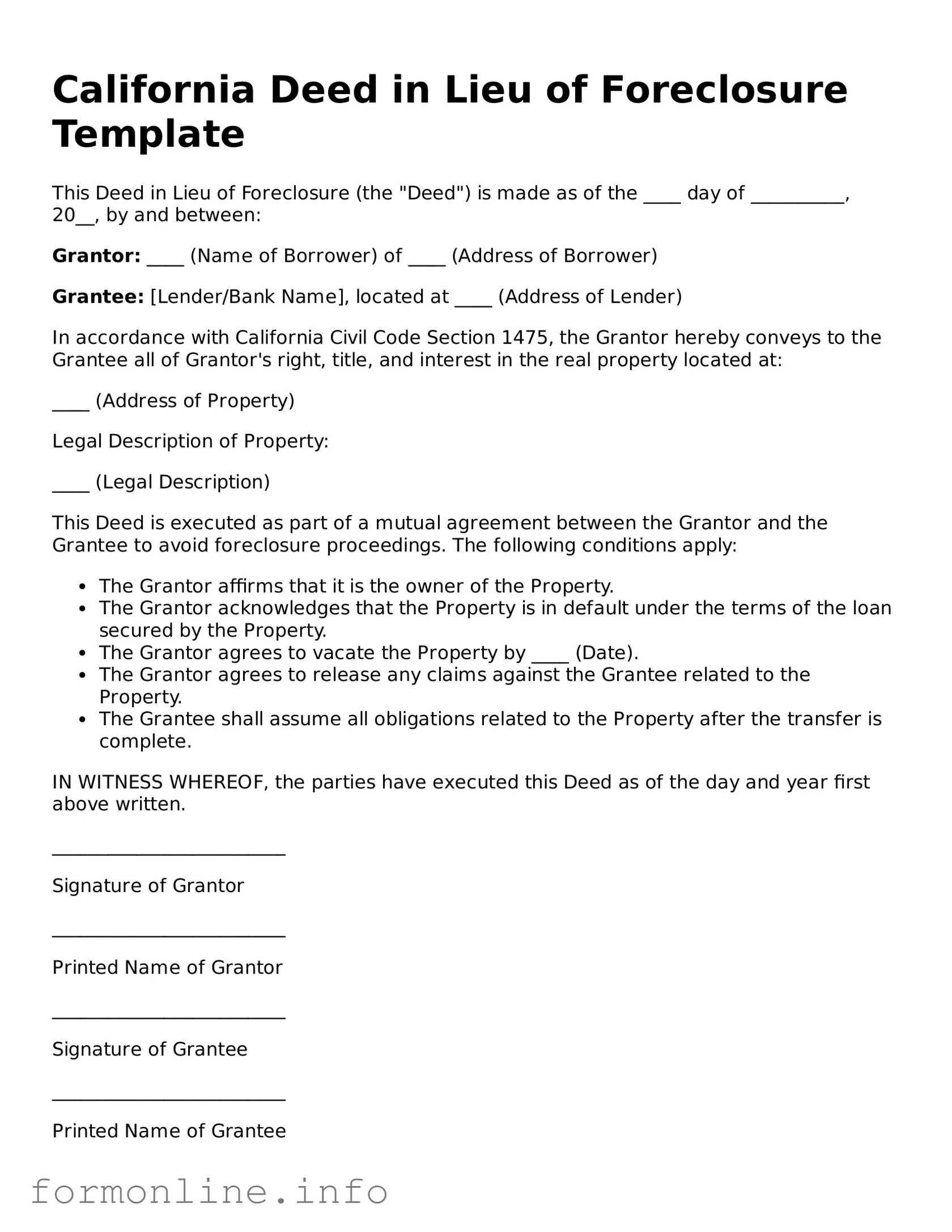California Deed Template
This document serves as a template for a deed specific to the state of California. It is intended to facilitate the transfer of property ownership in accordance with California's legal guidelines.
THIS DEED, made this ____ day of __________, 20__, by and between:
Grantor: __________________________________________ (Name and Address)
Grantee: __________________________________________ (Name and Address)
WITNESSETH:
That the Grantor, for and in consideration of the sum of $________, the receipt of which is hereby acknowledged, does hereby grant, bargain, sell, and convey unto the Grantee the following described real property situated in the County of __________, State of California:
Property Description:
_________________________________________________________________
_________________________________________________________________
This grant is made subject to any and all restrictions, easements, and covenants of record.
IN WITNESS WHEREOF, the Grantor has executed this Deed on the day and year first above written.
_______________________________
(Signature of Grantor)
_______________________________
(Printed Name of Grantor)
_______________________________
(Signature of Witness)
_______________________________
(Printed Name of Witness)
State of California
County of __________
On this ____ day of __________, 20__, before me, a Notary Public in and for said State, personally appeared __________, known to me to be the person whose name is subscribed to the within instrument, and acknowledged that he/she executed the same.
_______________________________
(Notary Public Signature)
My Commission Expires: _______________
This template serves as a guideline. For specific transactions, consider legal advice to ensure compliance with all applicable laws.
